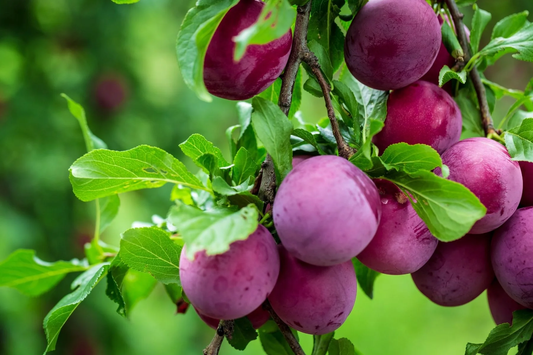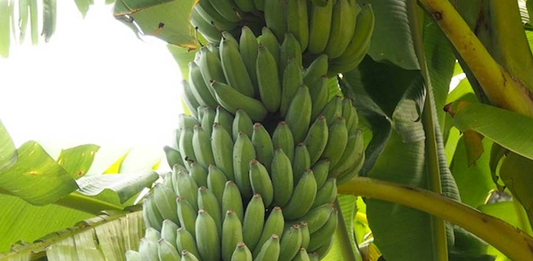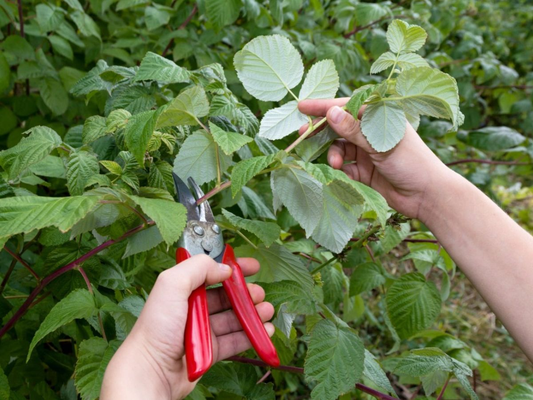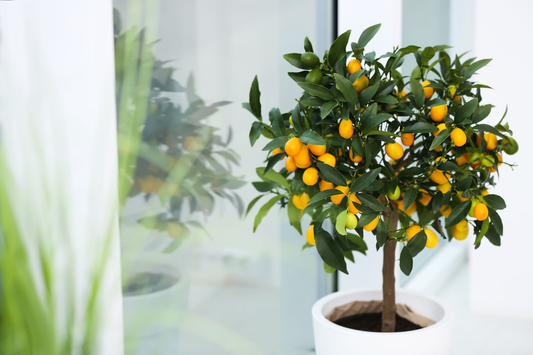How to Plant a Tree in Your Yard
Share
- 1. Introduction
- 2. Choosing the Right Tree for Your Yard
- 3. Preparing the Planting Site
- 4. Buying a Healthy Tree
- 5. Digging the Hole and Planting the Tree
- 6. Caring for Your Newly Planted Tree
- 7. Common Mistakes to Avoid When Planting Trees
- 8. Benefits of Planting Trees in Your Yard
- 9. Long-Term Maintenance Tips
- 10. Frequently Asked Questions
1. Introduction
Planting a tree in your yard is one of the most impactful actions you can take to enhance your home and contribute to a healthier environment. Trees not only beautify your space but also provide numerous long-term benefits that extend beyond your property.
Why Plant Trees in Residential Areas?
-
Environmental Benefits:
- Reduce carbon footprint by absorbing carbon dioxide and releasing oxygen.
- Help combat urban heat by providing natural shade and lowering temperatures.
- Prevent soil erosion and improve water retention in the ground.
-
Economic Benefits:
- Increase property value with mature, well-maintained trees.
- Lower energy costs by providing shade in summer and windbreaks in winter.
-
Social and Personal Benefits:
- Create a peaceful outdoor environment for relaxation and recreation.
- Provide habitats for birds, insects, and other wildlife.
- Promote mental well-being and reduce stress by connecting with nature.
Steps to Planting a Tree in Your Yard
To successfully plant a tree, follow these key steps:
- Choose the right tree: Select a tree species that suits your yard’s size, soil, and climate.
- Prepare the planting site: Ensure the area is free from obstacles like power lines or underground utilities.
- Test and amend the soil: Check for nutrient levels and pH, adding organic matter as needed.
- Dig the hole: Make it twice as wide and as deep as the tree’s root ball for proper root growth.
- Plant and backfill: Position the tree correctly, backfill the soil, and water thoroughly.
- Care for your tree: Use mulch, water consistently, and protect it from pests and extreme weather.
Planting a tree may seem straightforward, but attention to detail at every stage ensures the health and longevity of your tree. Whether you’re planting for aesthetic, environmental, or practical reasons, the steps outlined in this guide will help you establish a thriving tree in your yard.

2. Choosing the Right Tree for Your Yard
2.1. Factors to Consider
Selecting the right tree for your yard involves careful planning to ensure that it thrives in its environment while meeting your needs. Consider the following factors:
-
Climate and USDA Hardiness Zone:
- Determine your zone using the USDA Plant Hardiness Zone Map.
- Choose trees suited to your zone to ensure survival through seasonal changes.
-
Soil Type and pH Preferences:
- Test your soil for texture (sand, clay, loam) and drainage capacity.
- Check pH levels: some trees prefer acidic soil, while others thrive in neutral to alkaline conditions.
-
Space Availability and Mature Tree Size:
- Consider the height and canopy spread of the tree at maturity.
- Avoid planting near power lines, buildings, or underground utilities.
-
Purpose of the Tree:
- Ornamental: Enhance aesthetic appeal with flowering or colorful trees.
- Shade: Provide cooling and reduce energy costs during summer.
- Fruit: Grow your own fresh produce, such as apples or peaches.
- Privacy: Create a natural screen with dense foliage trees.
2.2. Popular Tree Options by Purpose
Here are some popular trees based on their intended purpose:
- Shade Trees: Maple, Oak, Sycamore.
- Ornamental Trees: Dogwood, Magnolia, Japanese Maple.
- Fruit Trees: Apple, Cherry, Peach.
- Privacy Trees: Leyland Cypress, Arborvitae.
Table: Comparing Popular Tree Options
| Type | Best Examples | Advantages | Disadvantages |
|---|---|---|---|
| Shade Trees | Maple, Oak | Long-lasting, provides shade | Requires more space, slow growth. |
| Ornamental Trees | Dogwood, Magnolia | Aesthetic value | Seasonal maintenance required. |
| Fruit Trees | Apple, Cherry | Edible produce | Requires pruning and pest control. |
| Privacy Trees | Leyland Cypress, Arborvitae | Dense foliage for natural screening | Fast growth can require frequent pruning. |
3. Preparing the Planting Site
3.1. Selecting the Location
Choosing the right location for your tree is critical for its long-term health and growth. Keep the following factors in mind:
-
Avoiding Power Lines and Underground Utilities:
- Check for overhead power lines to avoid interference as the tree grows.
- Contact your local utility service to mark underground pipes or cables before digging.
-
Sunlight Requirements:
- Most trees thrive in full sun (6–8 hours of direct sunlight daily).
- Some ornamental or shade-tolerant species prefer partial shade.
- Match the tree's sunlight needs to your yard’s conditions.
3.2. Soil Testing and Amendments
Healthy soil is the foundation for a thriving tree. Start with a soil test and make necessary improvements:
-
Testing Soil pH and Nutrient Content:
- Use a soil testing kit or send a sample to a local extension office.
- Identify nutrient deficiencies (e.g., nitrogen, phosphorus, potassium).
- Determine pH levels; most trees prefer slightly acidic to neutral soil (pH 6–7).
-
Adding Amendments for Optimal Growth:
- Compost: Improves soil structure, water retention, and nutrients.
- Organic Matter: Incorporate decomposed leaves, peat moss, or aged manure.
- Fertilizers: Choose balanced fertilizers (e.g., 10-10-10) if needed.
3.3. Tools and Materials You’ll Need
Gather all the necessary tools and materials before you begin planting:
-
Essential Tools:
- Shovel or spade for digging the hole.
- Garden fork for loosening compacted soil.
- Watering can or hose for irrigation.
- Mulch for moisture retention and weed control.
- Tree stakes and ties for stabilizing young trees in windy areas.
-
Optional Tools:
- pH meter for quick soil testing.
- Wheelbarrow for moving soil or compost.
- Pruners for trimming damaged roots or branches.

4. Buying a Healthy Tree
4.1. Where to Buy
Choosing the right source for your tree is the first step to ensuring its health and vitality. Here are your options:
-
Local Nurseries:
- Benefit from expert advice specific to your local climate and soil conditions.
- Inspect trees in person to ensure they are pest- and disease-free.
- Support local businesses and avoid shipping-related stress on the tree.
-
Online Stores:
- Wider selection of tree species and varieties.
- Convenient for hard-to-find or specialty trees.
- Ensure the store offers a live plant guarantee for quality assurance.
4.2. What to Look For in a Tree
Inspecting a tree before purchasing is crucial to ensure it is healthy and ready to thrive in your yard. Here’s what to check:
-
Healthy Roots:
- Root Ball Inspection: Avoid trees with roots circling the root ball, as this may lead to root girdling.
- Roots should be firm, moist, and free of rot or damage.
-
Absence of Pests, Diseases, or Physical Damage:
- Check for signs of pests, such as holes in leaves or webbing.
- Look for disease symptoms like discoloration or spots on leaves and bark.
- Avoid trees with broken branches or trunk wounds.
-
Tree Size and Type:
- Container-Grown Trees: Easier to transplant and establish quickly.
- Bare-Root Trees: Lightweight and cost-effective, suitable for dormant season planting.
- Balled and Burlapped Trees: Ideal for larger, more mature trees but heavier and costlier.
5. Digging the Hole and Planting the Tree
5.1. Proper Hole Size
The size of the planting hole is critical to ensure the tree establishes strong roots. Follow these steps:
-
Measure the Root Ball:
- Determine the width of the root ball or container.
- Dig a hole 2–3 times the width of the root ball to allow root expansion.
-
Measure the Depth:
- The depth of the hole should match the height of the root ball to prevent sinking.
- Ensure the root flare (where the trunk meets the roots) is at or slightly above ground level.
5.2. Tree Placement
Positioning the tree correctly ensures healthy root development and prevents long-term issues:
-
Position the Tree:
- Place the tree in the center of the hole, ensuring it is upright.
- Avoid root girdling by spreading out the roots gently.
-
Removing the Tree:
- Container Trees: Remove the tree carefully from the container, loosening any circling roots.
- Burlap Trees: Cut away any burlap or string to prevent girdling roots.
5.3. Backfilling the Hole
Proper backfilling helps anchor the tree and provides essential nutrients:
-
Mix the Soil:
- Combine the excavated soil with compost or organic matter for added nutrients.
- Avoid adding too much fertilizer, which may harm young roots.
-
Tamp the Soil:
- Fill the hole halfway, then tamp the soil lightly to eliminate air pockets.
- Continue backfilling and tamping gently until the hole is filled.
5.4. Watering After Planting
Watering immediately after planting is crucial for tree establishment:
-
Deep Watering:
- Water the tree thoroughly to ensure the entire root ball is saturated.
- Apply water slowly to allow it to seep deep into the soil.
-
Watering Schedule:
- During the first few weeks, water the tree 2–3 times per week depending on weather conditions.
- Gradually reduce watering as the tree establishes, but keep the soil consistently moist.

6. Caring for Your Newly Planted Tree
6.1. Mulching
Mulching is an essential part of tree care that helps maintain soil health and moisture:
-
Benefits of Mulching:
- Helps retain moisture in the soil, reducing the need for frequent watering.
- Prevents weed growth, which competes with the tree for nutrients and water.
- Insulates the soil, keeping roots cooler in summer and warmer in winter.
-
Recommended Materials:
- Organic mulches such as wood chips, bark, or shredded leaves.
- Avoid using materials that can compact easily, like stone or plastic.
-
Proper Application:
- Spread mulch in a 2–4 inch layer around the base of the tree, but keep it away from the trunk to avoid moisture buildup that could cause rot.
- Extend the mulch out to the tree’s drip line, or where the branches naturally extend.
6.2. Staking the Tree
Staking provides support for young trees until they establish themselves:
-
When Staking is Necessary:
- If the tree has a weak or leaning trunk that needs support.
- In areas with strong winds or high foot traffic that could damage the tree.
-
How to Stake a Tree:
- Use flexible materials such as soft tree ties or webbing to avoid girdling the trunk.
- Place stakes outside of the root zone to avoid damaging roots.
- Position the stakes so the tree remains upright, but not overly rigid, allowing it to sway slightly.
-
When to Remove Stakes:
- Remove the stakes after the tree is stable and can stand upright on its own, usually within 1–2 years.
- Leaving stakes in place too long can inhibit the tree's ability to develop strong root systems.
6.3. Watering Schedule
Proper watering ensures that your tree establishes strong roots in its first year:
-
First-Year Watering Needs:
- Water the tree deeply and regularly during its first year, especially in dry periods.
- Ensure the soil is moist but not waterlogged.
- As the tree grows, reduce watering frequency but keep the soil consistently moist.
-
Adjusting for Rainfall and Drought Conditions:
- If there is significant rainfall, reduce the watering frequency to prevent overwatering.
- During drought conditions, increase watering to compensate for the lack of rain, but ensure water is reaching deep into the root zone.
6.4. Protecting the Tree
Protecting your tree from potential threats ensures its survival and healthy growth:
-
Using Guards to Prevent Animal Damage:
- Place tree guards around the trunk to prevent damage from deer, rabbits, or rodents.
- Ensure the guard is tall enough to protect the entire trunk.
-
Shielding Young Trees from Extreme Weather:
- Use burlap or protective tree wraps to shield young trees from strong winds and cold temperatures during winter.
- Provide temporary shade from harsh sun during the summer to prevent leaf scorch.

7. Common Mistakes to Avoid When Planting Trees
Planting a tree can be a simple process, but it’s easy to make mistakes that can hinder its growth. Here are common errors to avoid:
-
Planting Too Deep or Too Shallow:
- Too Deep: Planting a tree too deep can cause the roots to suffocate, leading to poor growth and eventual death.
- Too Shallow: Planting too shallow leaves the root ball exposed, which can lead to drying out and instability in the tree.
- Solution: The root flare should be level with or slightly above ground level.
-
Overwatering or Underwatering:
- Overwatering: Too much water can cause root rot and suffocate the roots, leading to the tree’s decline.
- Underwatering: Insufficient water prevents roots from establishing properly, leaving the tree vulnerable to stress.
- Solution: Water deeply and regularly, but allow the soil to dry slightly between waterings to prevent waterlogging.
-
Using Improper Mulch Materials or Over-Mulching (“Mulch Volcanoes”):
- Improper Materials: Avoid using materials like plastic or stone that do not allow the soil to breathe.
- Over-Mulching: Piling too much mulch around the base of the tree can suffocate the roots and cause rot.
- Solution: Apply a 2–4 inch layer of organic mulch, ensuring it does not touch the tree trunk.
-
Ignoring Sunlight and Spacing Requirements:
- Sunlight: Ensure the tree’s sunlight needs align with the planting location (full sun, partial shade, etc.).
- Spacing: Plant trees with enough space to grow without crowding other plants or structures.
- Solution: Research the tree’s needs and plan accordingly to avoid overcrowding.
-
Not Pruning or Training the Tree Early:
- Pruning: Failing to prune the tree early can result in poor structure and damaged branches later on.
- Training: Without training, the tree may grow with improper angles or poor shape.
- Solution: Prune the tree to remove any damaged or crossing branches, and train the branches to ensure a strong structure.
8. Benefits of Planting Trees in Your Yard
Planting trees in your yard provides a range of benefits that extend beyond aesthetics. Here are some key advantages:
-
Environmental Benefits:
- Carbon Sequestration: Trees absorb carbon dioxide and release oxygen, helping mitigate climate change.
- Air Purification: Trees filter pollutants from the air, improving overall air quality around your home.
-
Economic Benefits:
- Increased Property Value: Well-placed trees can increase the value of your home by enhancing curb appeal and providing long-term landscaping benefits.
- Reducing Energy Bills: Shade from trees can reduce the need for air conditioning in the summer and lower heating costs in the winter.
-
Personal Benefits:
- Shade for Outdoor Activities: Trees provide cool, shaded areas for relaxing, entertaining, or playing, making your outdoor space more enjoyable.
- Visual Appeal: Trees add beauty and tranquility to your yard, improving the overall aesthetic and creating a natural focal point.

9. Long-Term Maintenance Tips
Proper long-term maintenance is essential to ensure your tree remains healthy and thriving throughout its life. Here are some key maintenance tips:
-
Pruning for Structural Health and Appearance:
- Regular pruning helps maintain a strong structure, removing any damaged or diseased branches.
- Prune your tree to shape it and encourage healthy growth, ensuring it doesn't become overgrown or misshapen.
- Always prune during the appropriate season for your tree species to avoid damaging it.
-
Fertilization Schedules and Soil Replenishment:
- Apply a slow-release fertilizer during the growing season to support healthy growth.
- Replenish soil nutrients by adding organic matter or compost regularly to improve soil structure.
- Monitor soil pH and make necessary adjustments to ensure it remains within the ideal range for your tree.
-
Monitoring for Pests and Diseases:
- Inspect your tree regularly for signs of pests, such as holes in leaves or discolored branches.
- Early detection can prevent severe damage and keep your tree healthy.
- Use organic or chemical pest control options as needed, depending on the severity of the problem.
-
Importance of Regular Watering During Dry Seasons:
- During dry spells, ensure your tree receives deep watering to maintain healthy root systems.
- Water in the early morning or late evening to prevent water loss through evaporation.
- Adjust your watering schedule depending on rainfall and seasonal conditions to keep the soil adequately moist.
10. Frequently Asked Questions
-
How do I know if my yard is suitable for planting a tree?
Before planting a tree, consider the following:
- Soil: Check if your soil is well-draining and fertile. You can test the soil's pH and nutrient levels to ensure it's suitable for the type of tree you want to plant.
- Space: Make sure there’s enough room for the tree to grow. Consider both the root spread and the mature canopy size to avoid overcrowding.
- Climate: Ensure your local climate aligns with the tree’s requirements. Check the USDA hardiness zone for compatibility with your area’s temperature range.
-
When is the best time to plant a tree?
The best time to plant a tree depends on your climate:
- Fall Planting: Fall is often ideal, as the cooler weather allows roots to establish before winter. It's a great time for many deciduous trees.
- Spring Planting: Spring is also a good time when the ground has thawed, and trees can take advantage of the warm weather for growth.
-
How close can I plant a tree to my house or other structures?
When planting near structures, consider the following:
- Root Spread: Most tree roots extend far beyond the tree trunk, so avoid planting too close to foundations, pipes, or driveways.
- Canopy Considerations: Ensure there’s enough space for the tree to grow without interfering with roofs, windows, or power lines. Allow for at least 10-20 feet, depending on the tree's mature size.
-
How do I prevent pests and diseases in my tree?
To keep your tree healthy, follow these prevention methods:
- Mulching: Apply a 2-4 inch layer of organic mulch around the base of the tree to retain moisture and prevent weeds.
- Proper Watering: Water your tree deeply and consistently, but avoid overwatering, as this can attract pests and promote disease.
- Regular Inspections: Check your tree regularly for signs of pests or disease, such as wilting leaves, yellowing, or holes in the bark.
-
How long does it take for a tree to grow to maturity?
The timeline for tree maturity varies by species:
- Fast-Growing Trees: Trees like poplar or willows may mature in 10-20 years.
- Medium Growth Trees: Oak or maple trees may take 20-30 years to fully mature.
- Slow-Growing Trees: Some trees, like certain oaks or pines, can take 40+ years to reach full maturity.




